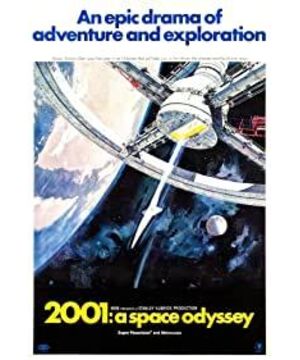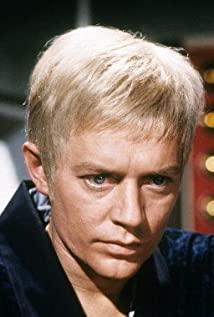As for the latter type of works, the most classic example is "Citizen Kane". Before this American film was launched, most film narratives were carried out in a single-line, positive narrative way, but "Citizen Kane" introduced multiple people. The way of perspective, flashback and positive narrative has greatly expanded the creative space of the artistic tool of film. Another classic example is "2001: A Space Odyssey." A large part of the elements used in the space science fiction movies we see today can be found in "2001: A Space Odyssey."
"2001 A Space Odyssey" is an American director Stanley Kubrick's four-year work completed in 1968. The director Kubrick is very special, with few works, but most of them are regarded as classics. You can always see his name in the selection of the greatest director, but he himself has never won any decent Oscars. His works are often criticized by advocates and mainstream people, causing continuous controversy.
Kubrick's works always explore the dark side of human nature and expose the inherent contradictions and ugliness of man-made systems. For example, his Vietnam War movie "Full Metal Shell" did not portray the war scenes cruelly and realistically like other directors, but deliberately presented the dehumanizing nature of military training. Other directors only criticized a certain war or the totality of the war. However, he stood from a higher perspective and criticized the immoral nature of the military system. Since the purpose of the military is to train a group of soldiers with perseverance and perseverance, there is no need to say more about how and why the war is cruel.
Another controversial work, "A Clockwork Orange", which was not lifted by the United Kingdom until 2000, challenged the anti-human nature of the education system. The film portrays an evil young man who does no evil. After receiving training and training, he becomes a good person who follows the rules. However, this process of training and training is extremely inhumane, causing dissatisfaction among the general public. The authorities have to withdraw these training and training. Let the youth return to his "nature". When people talk about humanity, they advocate that they should not violate the laws of nature and human nature, such as forcing a good person to do bad things against their nature. So the same, forcing a bad person to violate his nature not to do bad things is essentially inhumane. Inferring from this, all education systems and probation systems in society are essentially anti-human and inhumane.
It is precisely because of the avant-garde views and perspectives proposed by Kubrick's works that many people are inevitably dissatisfied and uneasy. But in essence, his views and perspectives are not wrong, but they are different from mainstream voices, and they sound a little bit different. It's ear-piercing. Because of this, although Kubrick's works are difficult to win the recognition of mainstream institutions such as Oscars, they are regarded as classics by filmmakers and endure for a long time.
■"2001: A Space Odyssey" is a milestone in space science fiction movies. It can be said to have laid the "standard" of today's space science fiction movies. In addition to this point, it is similar to "Citizen Kane". nice". The pace of "2001: A Space Odyssey" is very slow, a two-hour work, giving people a four-hour psychological feeling, and most people commented after reading it: I don’t understand.
The English name of "2001: A space Odyssey" is "2001: A space Odyssey", where 2001 refers to the first year of the new century, and Odyssey quotes the name of Homer's epic poem "Odyssey", which is about the Greek hero Odyssey The story of Si's victory and return home in the Trojan War, which is full of adventures, trials, death and rebirth, is often used to symbolize the "return" journey.
The original title of "2001: A Space Odyssey" points out Kubrick's views on the universe, the future, science, and life: a reciprocating cycle of returning to its origins. Therefore, the space science fiction movie "2001 A Space Odyssey" created by Kubrick does not take the space mission or space travel as the theme, but starts from the development of human beings and the progress of science and technology, and looks at the nature and evolution of life. The final destination.
"2001: A Space Odyssey" consists of four parts. The first part presents the birth of mankind. There is no dialogue or narration in this part, just like the National Geographic Channel, which records the work and rest of a group of apes for a long time. The second part is a jump directly to a space journey. A group of scientists set out on a mission to the moon to observe the newly discovered traces of life: a black stone stele. In the third segment, eighteen months later, a spacecraft headed towards Jupiter to find out where the energy emitted by the black stele on the moon was directed. The fourth section is the experience of one of the astronauts passing through the space-time tunnel after the spacecraft arrived at Jupiter.
The biggest point of view in the film is naturally Kubrick's depiction of future space technology and development at this point in 1968: human landing on the deserted moon (reality occurred in 1969), and signs of life on alien planets. , Computer has become a space tool that mankind depends on, the state and operation mode in the space capsule, the navigation in hibernation and the roaming under the weightlessness, the time tunnel that can see the past and the future. Regardless of whether the content of the depiction is consistent with the development of reality, these depiction methods and the processing of sound and light effects in space have been widely copied and quoted by later space science fiction movies.
Another highlight of the film is Kubrick's view of the universe, which is still controversial and discussed. In the four parts of the film, the "black stele" appears repeatedly and has a strong symbolic meaning. In the first part, the black stone tablet suddenly appeared among the apes, and then some apes learned to use the long femur as a tool for hunting food and attacking others. In the second part, scientists took pictures around a black stone stele that was accidentally unearthed, only to be attacked by electromagnetic waves from the stele. In the third part, in order to ensure the mission of detecting the nature of the black stele, the computer on the spacecraft even launched an attack on the astronauts on the ship, causing casualties. In the fourth part, the black stone stele triggers the replacement and rebirth of life.
No matter what the black stele is, it is an unnaturally formed thing that exists at the beginning of human beings and extends to the endless future, and each appearance seems to be accompanied by evolution and progress. Is this a symbol of the existence of God? Compared to this question, what is more interesting is actually the third part, the computer's attack on humans. A perfect computer with superb performance was installed on the spacecraft. During the voyage, the computer suddenly sent out a signal to inform the astronauts that a device on the ship was about to fail. However, another computer of the same type at the base indicated that the equipment was OK. As a result, the astronauts were worried about the problem with the computer on the ship and discussed about shutting it down. Unexpectedly, the computer counterattacked, stopping the dormant device, resulting in the death of the astronaut.
What happened to the computer on the spacecraft? Why is there a problem? At the beginning of the spacecraft's sailing, a reporter interviewed an astronaut and asked whether this powerful, nearly perfect supercomputer had feelings. The astronaut replied that only the computer itself knows. From the subsequent killing behavior of the computer and the reaction when it was terminated, it can be seen that the computer has its own thoughts and feelings, and it has evolved. In space, people discussed why the computer made errors. The computer answered that this computer has never missed and will never make errors. Every time an error occurs, it turns out to be "human error."
This computer on board is a perfect product made by humans, just like human beings are a perfect product of nature. After a computer error, it produces self-feeling and derives killing, just like humans have evolved wisdom and headed for space, but they also kill dissidents and kill the same kind. All this is both evolution and error. When the situation gets out of control, there is only one solution: destroy it and start again. So is the black stone monument a symbol of God and promotes human evolution, or is it an error correction mechanism that monitors human error behavior? Different people have different opinions.
In the last part of the film, the surviving astronauts finally arrived at their destination after passing through a surreal passage. He found himself in a baroque-style room and saw a much older self sitting in the dining room for dinner, and the older self turned his head and saw an older self lying on the bed. Not long after, this older self transformed into a baby wearing a space suit, reaching out his hand to touch the black stone monument floating in front of him, and then floating in space looking up at the endless starry sky.
Among them, the baroque room symbolizes returning to the past, but the baby in the space suit symbolizes the future. Correspondingly, the soundtrack from the beginning of the film is played again at the end of the film: the first paragraph "Sunrise" of Richard Strauss's "So Says Zarathustra". Life is like a cycle, with origin-evolution-destruction-rebirth. While heading to the future, it also heads to the source. In the final analysis, the journey of human beings to space and to the future is actually a journey of return.
Using "The Saying of Zarathustra" as the soundtrack for the beginning and the end of the movie is also a fun point of "2001: A Space Odyssey". "So Says Zarathustra" is a symphonic poem by Richard Strauss based on the work of the same name by the German philosopher Nietzsche. It depicts an idealistic religious believer who has transformed into a materialistic scientific pursuit The first paragraph of "Sunrise" depicts the birth of the world and the sunrise, when human beings feel the majestic momentum of God's energy. Therefore, does Kubrick show religious belief or satire in "2001: A Space Odyssey"? Different people have different opinions.
Like many things, we may not necessarily like them, but we can always find some angles to appreciate them, and the angles that can appreciate Kubrick's works are just a little more than some.
View more about 2001: A Space Odyssey reviews











